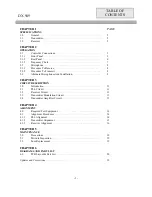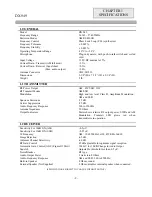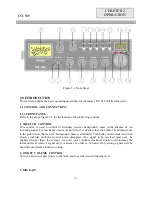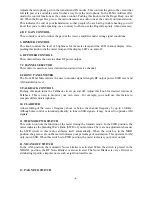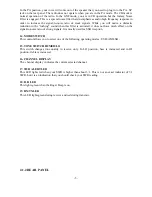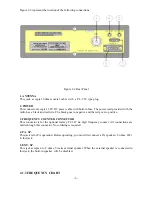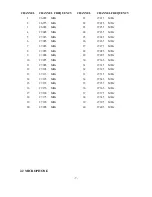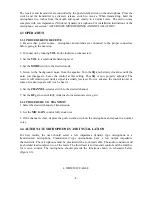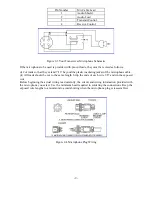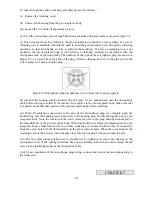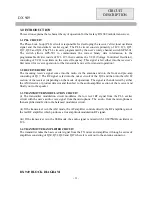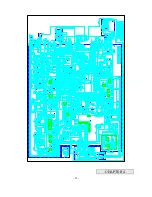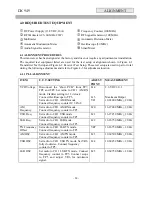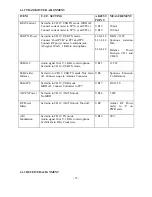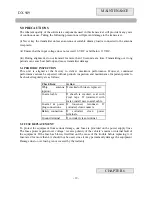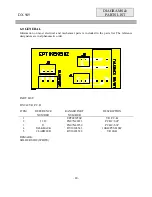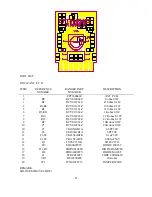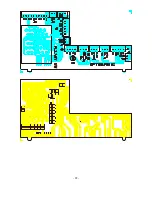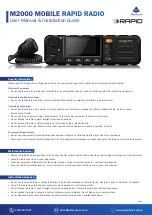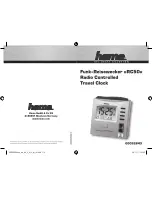
- 8 -
The receiver and transmitter are controlled by the push-to-talk switch on the microphone. Press the
switch and the transmitter is activated, release switch to receive. When transmitting, hold the
microphone two inches from the mouth and speak clearly in a normal voice. The radio comes
complete with low impedance (500 ohm) dynamic microphone. For installation instructions of the
microphone, see section “ALTERNATE MICROPHONES AND INSTALLATION”.
2.3 OPERATION
2.3.1 PROCEDURE TO RECEIVE
1. Be sure that power source, microphone and antenna are connected to the proper connectors
before going to the next step.
2. Turn unit on by running
VOL
knob clockwise on transceiver.
3. Set the
VOL
to a comfortable listening level.
4. Set the
MODE
switch to the desired mode.
5. Listen to the background noise from the speaker. Turn the
SQ
knob slowly clockwise until the
noise just disappears. Leave the control at this setting. This
SQ
is now properly adjusted. The
receiver will remain quiet until a signal is actually received. Do not advance the control too far or
some of weaker signals will not be heard.
6. Set the
CHANNEL
selector switch to the desired channel.
7. Set the
RF
gain control fully clockwise for maximum receive gain.
2.3.2 PROCEDURE TO TRANSMIT
1. Select the desired channel of transmission
2. Set the
MIC GAIN
control fully clockwise.
3. If the channel is clear, depress the push-to-talk switch on the microphone and speak in a normal
voice.
2.4 ALTERNATE MICROPHONES AND INSTALLATION
For best results, the user should select a low impedance dynamic type microphone or a
transistorized microphone. Transistorized type microphones have a low output impedance
characteristic. The microphones must be provided with a four-lead cable. The audio conductor and
its shielded lead comprise two of the leads. The third lead is for transmit control and the fourth is
for receive control. The microphone should provide the functions shown in schematic below
(Figure 2-3).
4 WIRE MIC CABLE
Summary of Contents for DX 949
Page 1: ......
Page 13: ...12 DX 949 CIRCUIT DIAGRAM...
Page 14: ...13 CHAPTER 4...
Page 18: ...17 Figure 4 2 Receiver test setup...
Page 19: ...18 Figure 4 3 Main PCB Adjustment Locations CHAPTER 5...
Page 23: ...22...
Page 29: ...28 DX 949 MAIN PCB REMARK SOLDER SIDE WHITE...
Page 33: ...32...
Page 34: ...33 AT0949040A...
Page 35: ...34...


